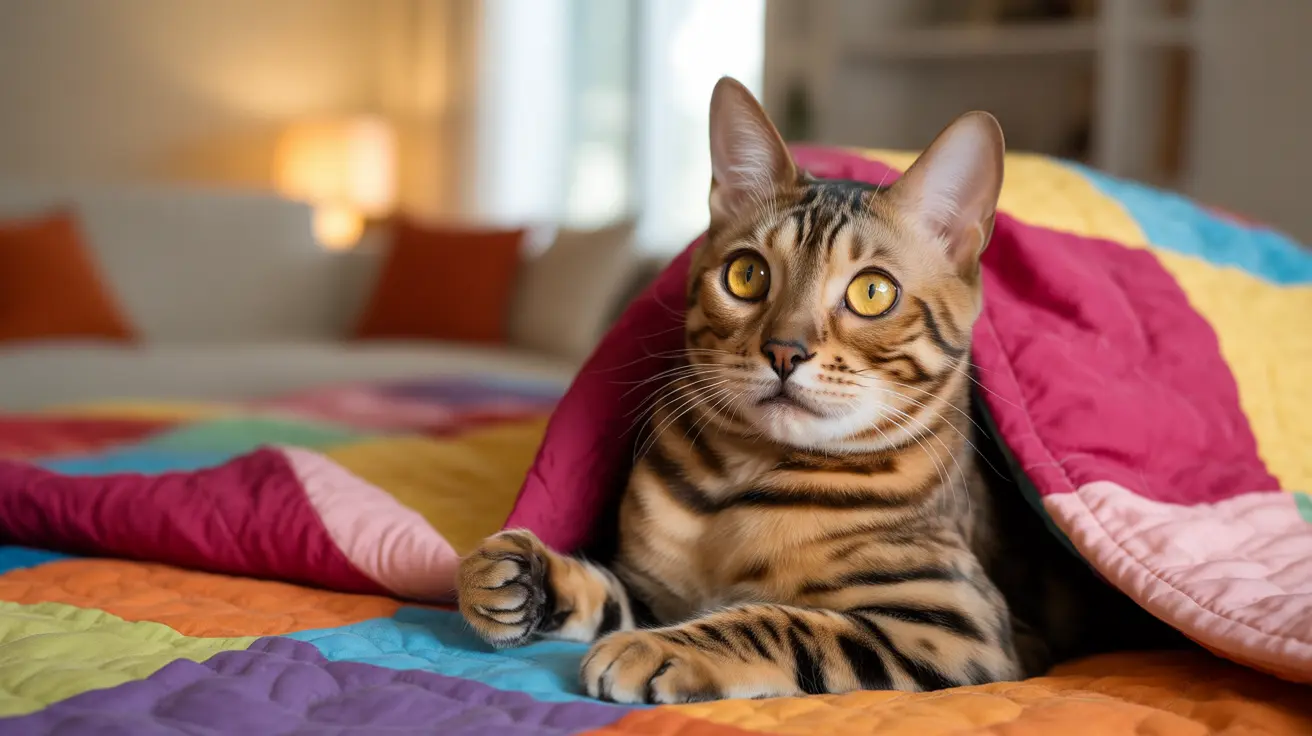The Evolutionary Drive Behind Blanket Burrowing
Cats' tendency to burrow under blankets stems from their ancestral instincts as both predator and prey. Wild cats seek out hidden, enclosed spaces for protection and hunting advantages. Your domestic cat's blanket-diving behavior is a modern expression of these ancient survival tactics.
This "bush dweller" instinct remains strong in house cats, who instinctively seek out covered locations that offer similar protective benefits to the dense vegetation their ancestors used for shelter.
Temperature Regulation and Comfort
Cats maintain a higher body temperature than humans, typically between 101°F and 102.5°F. Burrowing under blankets helps them maintain this optimal temperature, especially during colder weather or in air-conditioned environments.
The soft, warm environment created by blankets also mimics the comfort they experienced as kittens snuggling with their mother and littermates, triggering positive associations with safety and contentment.
Security and Stress Relief
For many cats, burrowing serves as a natural stress-relief mechanism. When feeling overwhelmed, anxious, or simply in need of alone time, cats seek out enclosed spaces that make them feel protected and secure.
- Moving to a new home
- Introduction of new pets
- Loud noises or visitors
- Changes in routine
Playful Exploration and Hunting Practice
Not all blanket burrowing is about security or warmth. Many cats engage in this behavior as part of their natural play drive. The movement of blankets can trigger their hunting instincts, leading to playful pouncing and "ambush" behaviors.
This type of play helps cats maintain their natural hunting skills while providing mental stimulation and exercise.
Creating Safe Burrowing Spaces
- Provide dedicated soft blankets or throws in quiet areas
- Consider purchasing a cat cave or covered bed
- Ensure blankets are lightweight enough for easy movement
- Keep burrowing areas away from heat sources
- Monitor for signs of overheating
When to Be Concerned
- Excessive hiding or withdrawal
- Changes in eating or drinking habits
- Lethargy or decreased activity
- Unusual vocalizations
- Signs of respiratory distress
Frequently Asked Questions
Why do cats burrow under blankets and what instincts drive this behavior?
Cats burrow under blankets due to ancestral instincts for protection and hunting. This behavior reflects their natural tendency to seek secure, enclosed spaces that offer both safety and tactical advantages, similar to how their wild ancestors used dense vegetation for shelter.
How does burrowing under blankets help cats feel safe and comfortable?
Blankets create a protected environment that blocks out external stimuli and provides a sense of security. The enclosed space offers warmth, darkness, and a barrier against potential threats, helping cats feel safe and relaxed.
Can a cat hiding under blankets indicate stress, anxiety, or illness?
While normal burrowing is common, sudden increases in hiding behavior or excessive time spent under blankets might indicate stress, anxiety, or illness. If accompanied by other behavioral changes or symptoms, consult a veterinarian.
What are some signs my cat is using blankets for warmth versus play or curiosity?
Cats seeking warmth typically settle in and remain still, often curling up tightly. During play, they're more likely to move around, pounce, or interact with movement above the blanket. Curious cats might repeatedly enter and exit their blanket hideout.
How can I create safe and cozy spaces at home for a cat that loves to burrow?
Provide multiple soft blankets or throws in quiet areas, consider purchasing specially designed cat caves, and ensure all burrowing spaces have adequate ventilation. Keep these areas away from heat sources and monitor your cat for signs of overheating.






